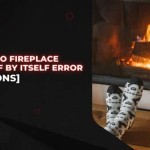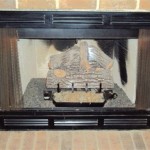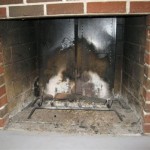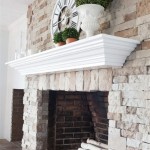Faux Stone Fireplace Kits: A Comprehensive Guide
Faux stone fireplace kits offer a compelling alternative to traditional masonry fireplaces, providing homeowners with an aesthetically pleasing and often more cost-effective way to add warmth and visual appeal to their living spaces. These kits typically comprise lightweight, manufactured stone veneer panels designed to mimic the appearance of natural stone, along with the necessary components for constructing a fireplace surround or complete fireplace unit.
The growing popularity of faux stone fireplace kits stems from several factors, including their relative ease of installation, diverse design options, and lower overall cost compared to constructing a fireplace from natural stone or brick. This article delves into the intricacies of faux stone fireplace kits, exploring their advantages, disadvantages, installation considerations, and various stylistic possibilities.
Understanding the composition of faux stone is crucial. These panels are usually made from a mixture of concrete, lightweight aggregates, and pigments. The molding process allows manufacturers to create highly realistic textures and variations in color, replicating the look and feel of natural stone. The lightweight nature of the materials reduces the structural support needed, making them suitable for a wider range of applications.
The market offers a wide variety of kits catering to different tastes and budgets. From rustic ledgestone to sleek, modern designs, there is a faux stone fireplace kit to complement virtually any interior décor. Before making a purchase, homeowners should carefully consider their design preferences, the dimensions of their space, and the required heating capacity of the fireplace.
Cost Considerations and Budgeting
One of the primary advantages of faux stone fireplace kits is their cost-effectiveness. While the initial investment may vary depending on the size, style, and quality of the kit, it is generally lower than the cost of building a traditional masonry fireplace. Masonry fireplaces require extensive labor, specialized skills, and significant quantities of materials such as bricks, mortar, and concrete blocks. Faux stone kits, on the other hand, are designed for relatively straightforward installation, often reducing labor costs.
However, it is important to factor in all associated costs when budgeting for a faux stone fireplace. This includes the cost of the kit itself, any necessary tools or materials (such as adhesives, fasteners, and sealants), and the cost of labor if professional installation is required. Furthermore, the cost of the firebox or fireplace insert must be considered, as the kit only comprises the surround or facade.
When comparing different faux stone kits, it is advisable to obtain quotes from multiple suppliers and carefully review the specifications of each kit. Some kits may include additional features or components, such as mantels, hearths, or trim pieces, which can impact the overall cost. A thorough assessment of these factors will ensure that the homeowner selects a kit that meets their needs and budget.
Homeowners should also consider the long-term cost implications of owning a fireplace. This includes the cost of fuel (wood, gas, or electricity) and any ongoing maintenance requirements. While faux stone is relatively durable and low-maintenance, it may require occasional cleaning or sealing to protect it from moisture and staining.
Installation Process and Skill Requirements
The installation process for faux stone fireplace kits can vary depending on the complexity of the design and the type of substrate to which the stone is being applied. Some kits are designed for direct application to drywall or plywood, while others may require a more substantial backing, such as cement board. It's imperative to adhere to the manufacturer's instructions.
In general, the installation process involves preparing the substrate, applying an adhesive or mortar to the back of the stone panels, and carefully positioning the panels on the wall or fireplace surround. Proper alignment and spacing are essential to achieving a professional-looking result. It may be necessary to cut the stone panels to fit around corners or other architectural features. This typically requires a wet saw or angle grinder with a diamond blade.
While some homeowners may be comfortable tackling the installation as a DIY project, it is important to assess one's skill level and experience before proceeding. Installing faux stone requires a certain degree of precision and attention to detail. Improper installation can result in uneven surfaces, loose stones, and an overall unprofessional appearance. If unsure, it is always advisable to hire a qualified contractor to ensure a proper and safe installation.
Regardless of whether the installation is done by the homeowner or a professional, it is crucial to follow all relevant building codes and safety regulations. This includes ensuring that the fireplace is properly vented and that all combustible materials are kept a safe distance from the firebox. Consult with local building authorities or a qualified inspector to ensure compliance with all applicable codes.
Proper substrate preparation is paramount. The surface needs to be clean, dry, and structurally sound. Any loose paint or wallpaper should be removed, and the surface should be properly primed. In some cases, it may be necessary to install a metal lath to provide additional support for the stone veneer. The lath is typically attached to the substrate with screws or nails and then covered with a scratch coat of mortar.
Design Versatility and Aesthetic Options
Faux stone fireplace kits offer a remarkable degree of design versatility, allowing homeowners to create a fireplace that perfectly complements their individual style and décor. The kits are available in a wide range of styles, colors, and textures, mimicking the look of various natural stones, such as stacked stone, river rock, fieldstone, and ledgestone.
The color palette of faux stone is equally diverse, ranging from warm earth tones to cool grays and blues. This allows homeowners to coordinate the fireplace with their existing furnishings and color scheme. Some kits even offer the option of staining or painting the stone to further customize the look.
Beyond the basic style and color of the stone, homeowners can further enhance the aesthetic appeal of their fireplace by adding architectural details such as mantels, hearths, and trim pieces. These elements can be used to create a more traditional or contemporary look, depending on the design. Mantels are available in a variety of materials, including wood, stone, and metal, and can be customized with different finishes and carvings.
The layout and configuration of the faux stone panels can also be used to create different visual effects. For example, a stacked stone pattern can add a rustic and textured look, while a smooth, uniform stone pattern can create a more modern and minimalist appearance. The size and shape of the stone panels can also be varied to create visual interest and depth.
Lighting can play a significant role in enhancing the beauty of a faux stone fireplace. Recessed lighting or spotlights can be used to highlight the texture and color of the stone, while ambient lighting can create a warm and inviting atmosphere. Consider adding sconces or pendant lights to complement the fireplace and create a focal point in the room.
The integration of the fireplace with the surrounding wall or room is also an important design consideration. A fireplace can be designed to blend seamlessly with the existing architecture or to stand out as a dramatic focal point. Consider the scale and proportion of the fireplace in relation to the size of the room, and choose a design that is both visually appealing and functional.
Moreover, the selection of the firebox and its surrounding materials are crucial for the overall aesthetic. Gas inserts often provide a more modern look, while wood-burning inserts can offer a more traditional feel. The material surrounding the actual flames can complement or contrast with the faux stone, creating a unique visual statement.
Ultimately, the design of a faux stone fireplace is a personal choice that should reflect the homeowner's individual taste and style. By carefully considering the various design options and paying attention to detail, it is possible to create a stunning and functional fireplace that will enhance the beauty and value of any home.
In conclusion, faux stone fireplace kits represent a practical and aesthetically pleasing solution for homeowners seeking to add a fireplace to their homes. Their affordability, ease of installation (relative to traditional masonry), and design versatility make them a compelling alternative to conventional fireplace construction methods. By carefully considering all factors, from cost and installation requirements to design aesthetics, homeowners can make an informed decision and create a fireplace that will provide warmth and enjoyment for years to come.

Jerre S Faux Stone Fireplace Surround Genstone

Outdoor Fireplace Kits Stonewood S Cape Cod Ma Nh Ct

Stone Fireplace Design And Remodel

Outdoor Fireplace Round Grove Mezzo Fp1600 Patio Furnishings

Natural Stacked Stone Veneer Fireplace Ideas

Outdoor Fireplace Kits Stonewood S Cape Cod Ma Nh Ct

Natural Stacked Stone Veneer Fireplace Ideas

Stone Fireplace Design And Remodel

M Rock Manufactured Concrete Fireplace Trim Kit Gray Mrfireplacegray The Home Depot

Some Stone Fireplace Surround Ideas You Ll Love Southwest Supply
Related Posts








